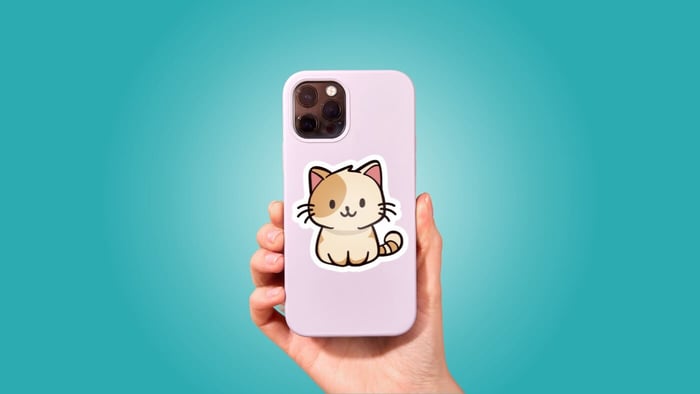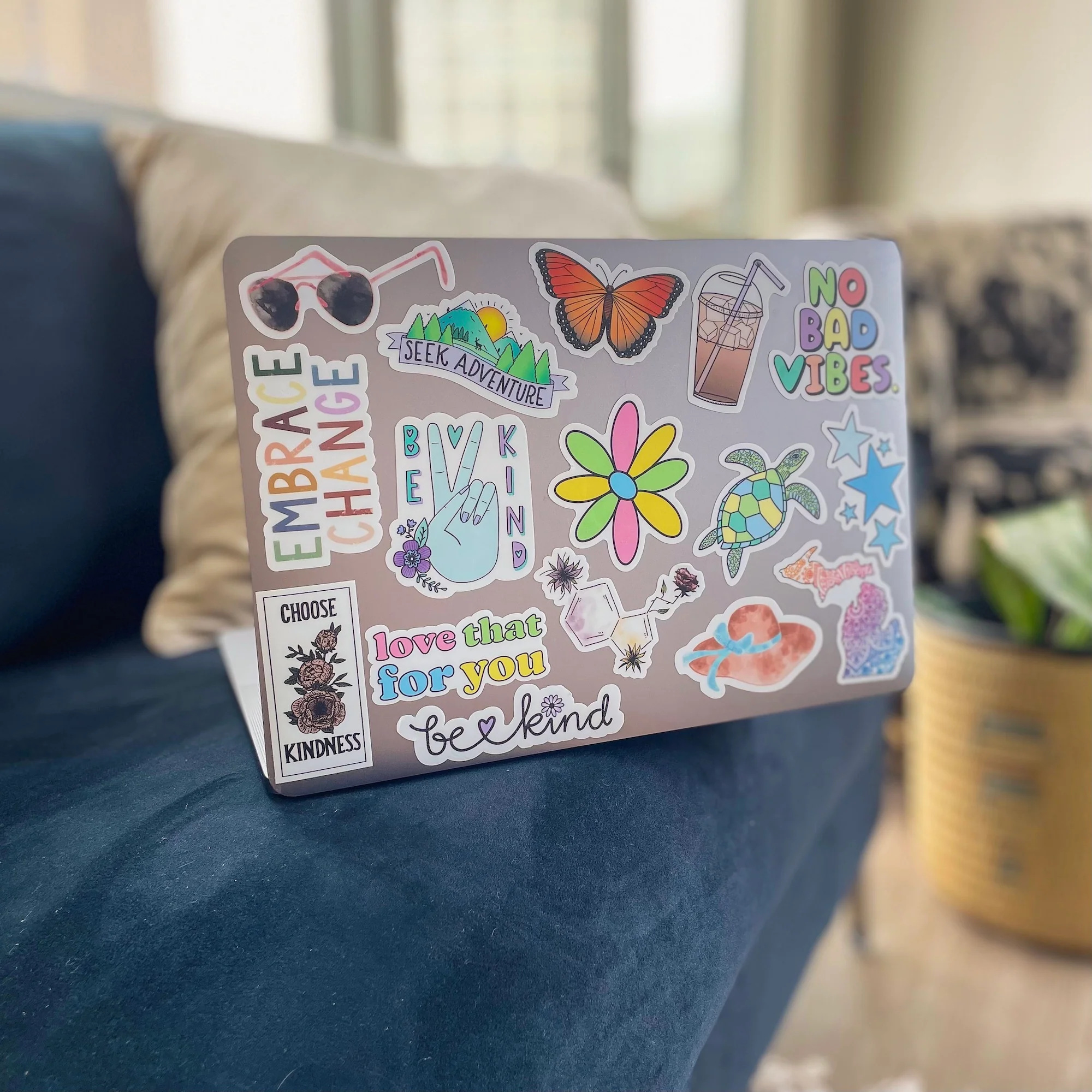Once upon a time, your device said something about you.
The kind of phone you carried, the laptop you brought to class, the headphones you wore around your neck… they weren’t just tools. They were statements.

Owning the newest iPhone or that sleek MacBook was part of your identity. But as tech has become more standardized, so has the look of our devices. Everyone has the same phone. The same earbuds. The same glowing apple on their laptop lid.
So people did what people always do when things get too uniform: they found a way to make it personal. This included phone cases, but now more frequently, stickers.
The Rise of the Personal Device Canvas
Walk into any college library, coffee shop, or coworking space and you’ll see it. Laptops blanketed in sticker mosaics, phone cases covered with slogans, memes, cat stickers, bands, political stances, fandoms, and inside jokes. What was once a pristine surface is now a curated collage.
Why? Because in a world where the devices themselves no longer say much about who we are, we’ve turned to customization to do the talking.
Stickers are the new voice of individuality. They’re low-stakes, high-expression, and easily swappable. Want to show off your niche music taste? Slap on a band logo.
Into gaming, anime, or obscure internet jokes? There’s a sticker for that. Got a social cause you’re passionate about? A $5 vinyl decal can broadcast your values to every stranger at the coffee shop.
And it’s not just laptops. Phones, tablets, water bottles, game consoles (even charging bricks) are getting the sticker treatment.
It’s Not Just Decoration, It’s Identity
Stickers aren’t just cute accessories; they’re micro-billboards for personality. They tell stories. They invite connection.
When you see someone with a “mentally I’m in 2007” sticker or Ed Sheeran glaring at your from the back of someones laptop, you immediately get a sense of their humor, their nostalgia, or what kind of vibe they’re bringing into the world. It sparks conversation, or at least recognition.
This trend is especially powerful among Gen Z and millennials, generations raised on Tumblr dashboards, Pinterest boards, and Instagram aesthetics. For them, identity has always been about layering and remixing, taking pieces of culture and making them your own. Stickers are just the physical-world extension of that.
From Collector to Creator
What’s interesting about the sticker trend is how it’s turned consumers into curators and sometimes creators. People now browse Etsy, Redbubble, and niche indie shops not just for utility, but for expression. They build sticker collections the way earlier generations collected pins or patches.
And for artists, illustrators, and small brands, stickers have become an accessible way to sell creativity. They’re cheap to produce, easy to ship, and have an absurdly high impulse-buy factor. (Seriously, who hasn’t added a $4 sticker to an order just because it made them laugh?)

The Decline of Minimalism?
The rise of stickers also signals a shift away from the sterile, minimalistic tech aesthetic that’s dominated for over a decade. Where once the goal was clean lines and empty space, now there’s charm in clutter. Controlled chaos. Carefully curated noise.
People don’t want their stuff to look like everyone else’s anymore. They want their phone case to make someone laugh. They want their laptop to feel lived-in, not like it just came off an assembly line.
The Bottom Line
In a world where we carry nearly identical devices, stickers are how we reclaim our tech as our own.
They’re tiny, personal acts of rebellion against sameness. Proof that even if we’re all using the same machines, we’re still wildly different people.
So if you’re feeling like your gadgets are a little too sterile, too impersonal, too “stock photo,” maybe it’s time to find a sticker… or ten. Because sometimes, what your device needs most… is a little personality.
